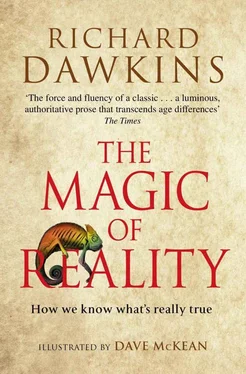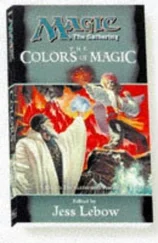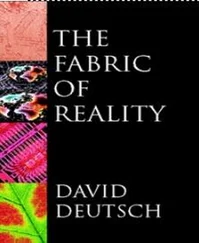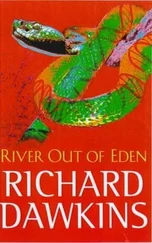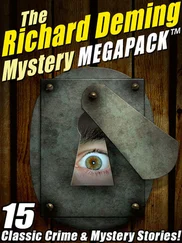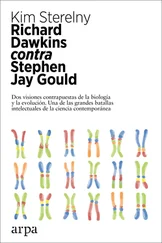An early model of the atom was the so called ‘currant bun’ model proposed by the great English physicist J. J. Thomson at the end of the nineteenth century. I won’t describe it because it was replaced by the more successful Rutherford model, first proposed by the same Ernest Rutherford who split the atom, who came from New Zealand to England to work as Thomson’s pupil and who succeeded Thomson as Cambridge’s Professor of Physics. The Rutherford model, later refined in turn by Rutherford’s pupil, the celebrated Danish physicist Niels Bohr, treats the atom as a tiny, miniaturized solar system. There is a nucleus in the middle of the atom, which contains the bulk of its material. And there are tiny particles called electrons whizzing around the nucleus in ‘orbit’ (though ‘orbit’ may be misleading if you think of it as just like a planet orbiting the sun, because an electron is not a little round thing in a definite place).
One surprising thing about the Rutherford / Bohr model, which probably reflects a real truth, is that the distance between each nucleus and the next is very large compared with the size of the nuclei, even in a hard chunk of solid matter like a diamond. The nuclei are hugely spaced out. This is the point I promised to return to.
Remember I said that a diamond crystal is a giant molecule made of carbon atoms like soldiers on parade, but a parade in three dimensions? Well, we can now improve our ‘model’ of the diamond crystal by giving it a scale – that is, a sense of how sizes and distances in it relate to one another. Suppose we represent the nucleus of each carbon atom in the crystal not by a soldier but by a football, with electrons in orbit around it. On this scale, the neighbouring footballs in the diamond would be more than 15 kilometres away.
The 15 kilometres between the footballs would contain the electrons in orbit around the nuclei. But each electron, on our ‘football’ scale, is much smaller than a gnat, and these miniature gnats are themselves several kilometres away from the footballs they are flying around. So you can see that – amazingly – even the legendarily hard diamond is almost entirely empty space!
The same is true of all rocks, no matter how hard and solid. It is true of iron and lead. It is also true of even the hardest wood. And it is true of you and me. I’ve said that solid matter is made of atoms ‘packed’ together, but ‘packed’ means something rather odd here because the atoms themselves are mostly empty space. The nuclei of the atoms are spaced out so far apart that, if they were scaled up to footballs, any pair of them would be 15 kilometres apart with only a few gnats in between.
How can this be? If a rock is almost entirely empty space, with the actual matter dotted about like footballs separated by kilometres from their neighbours, how come it feels so hard and solid? Why doesn’t it collapse like a house of cards when you sit on it? Why can’t we see right through it? If both a wall and I are mostly empty space, why can’t I walk straight through the wall? Why do rocks and walls feel hard, and why can’t we merge our spaces with theirs?
We have to realize that what we feel and see as solid matter is more than just nuclei and electrons – the ‘footballs’ and the ‘gnats’. Scientists talk about ‘forces’ and ‘bonds’ and ‘fields’, which act in their different ways both to keep the ‘footballs’ apart and to keep the components of each ‘football’ together. And it is those forces and fields that make things feel solid.
When you get down to really small things like atoms and nuclei, the distinction between ‘matter’ and ‘empty space’ starts to lose its meaning. It isn’t really right to say that the nucleus is ‘matter’ like a football, and that there is ‘empty space’ until the next nucleus.
We define solid matter as ‘what you can’t walk through’. You can’t walk through a wall because of these mysterious forces that link the nuclei to their neighbours in a fixed position. That’s what solid means.
Liquid means something similar, except that the mysterious fields and forces hold the atoms together less tightly, so they slide over each other, which means that you can walk through water, although not so fast as you can walk through air. Air, being a gas (a mixture of gases, actually), is easy to walk through because the atoms in a gas whizz about freely, rather than being tied to each other. A gas becomes difficult to walk through only if most of the atoms are whizzing in the same direction, and it is the opposite direction to the one in which you are trying to walk. This is what happens when you are trying to walk against the wind (that’s what ‘wind’ means). It can be difficult to walk against a strong gale, and impossible against a hurricane or against the artificial gale hurled out behind a jet engine.
We can’t walk through solid matter, but some very small particles such as the ones called photons can. Light beams are streams of photons, and they can go right through some kinds of solid matter – the kinds we call ‘transparent’. Something about the way the ‘footballs’ are arranged in glass or in water or in certain gemstones means that photons can pass right between them, although they are slowed down a bit, just as you are slowed down when you try to walk through water.
With a few exceptions like quartz crystals, rocks aren’t transparent, and photons can’t pass through them. Instead, depending on the rock’s colour, they are either absorbed by the rock or reflected from its surface, and the same is true of most other solid things. A few solid things reflect photons in a very special straight-line way, and we call them mirrors. But most solid things absorb many of the photons (they aren’t transparent), and scatter even the ones that they reflect (they don’t behave like mirrors). We just see them as ‘opaque’, and we also see them as having a colour, which depends on which kinds of photons they absorb and which kinds they reflect. I’ll return to the important subject of colour in Chapter 7, ‘What is a Rainbow?’ Meanwhile, we need to shrink our vision to the very small indeed, and look right inside the nucleus – the football – itself.
The tiniest things of all
The nucleus isn’t really like a football. That was just a crude model. It certainly isn’t round like a football. It isn’t even clear whether we should speak of it as having a ‘shape’ at all.
Maybe the very word ‘shape’, like the word ‘solid’, loses all meaning down at these very tiny sizes. And we are talking very very tiny indeed: the full stop at the end of this sentence contains about a million million atoms of printing ink.
Each nucleus contains smaller particles called protons and neutrons. You can think of them as balls too, if you wish, but like the nuclei they are not really balls. Protons and neutrons are approximately the same size as each other. They are very very tiny indeed, but even so they are still 1,000 times bigger than the electrons (‘gnats’) in orbit around the nucleus. The main difference between a proton and a neutron is that the proton has an electric charge. Electrons, too, have an electric charge, opposite to that of protons. We needn’t bother with exactly what ‘electric charge’ means here. Neutrons have no charge.
Because electrons are so very very very tiny (while protons and neutrons are only very very tiny!) the mass of an atom is, to all intents and purposes, just its protons and neutrons. What does ‘mass’ mean? Well, you can think of mass as rather like weight, and you can measure it using the same units as weight (grams or pounds). Weight is not the same as mass, however, and I’ll need to explain the difference, but I’m postponing that to the next chapter. For the moment just think of ‘mass’ as something like ‘weight’.
Читать дальше
